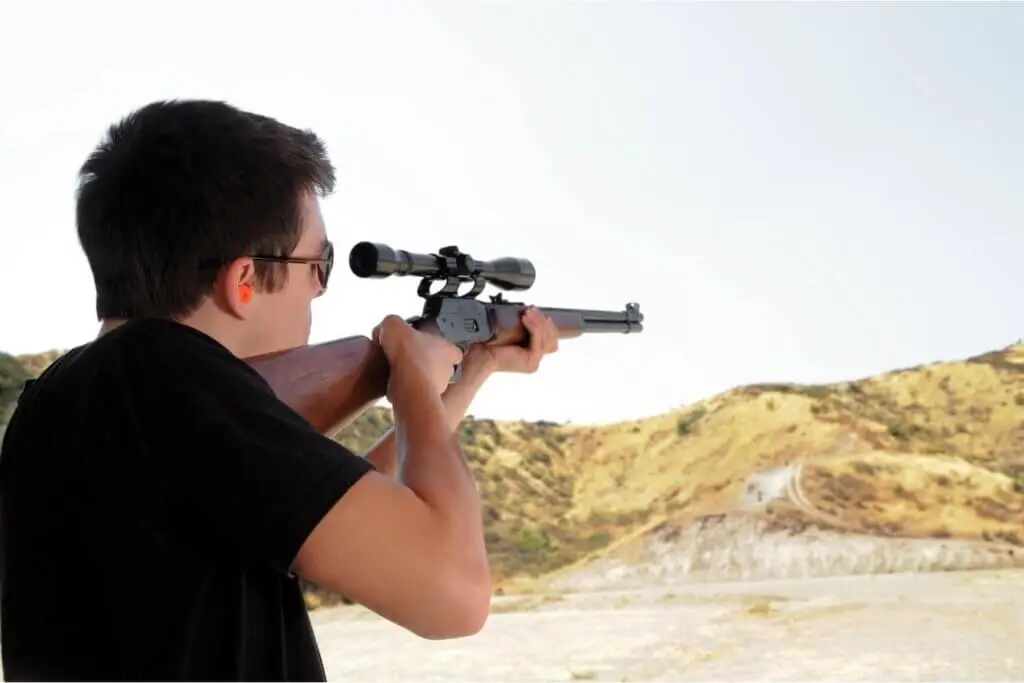No products in the cart.
JOIN OUR MAILING LIST for special offers!
Subscribe to our email list to find out of new sales and restocks – Don’t worry, we hate spam as much as you do and will only send you the best deals and reads.
Dry fire training can be a great way to focus on your trigger pull and reinforce muscle memory with your custom firearm. Whether you’re interested in improving accuracy, working on your draw mechanics, or just living far enough from a range it’s the only way to get some practice in, dry fire drills are a safe way to get some practice “rounds” in. While these drills won’t make you a marksman overnight, they can help you identify and correct bad habits that are sneaking into your shooting. Let’s take a look at the myths and benefits surrounding dry fire training.
Dry fire training involves pulling the trigger on a made-safe and cleared firearm. While some drills may not have you cocking the weapon, others will have you cycle an empty chamber, cocking the hammer, or otherwise engaging the striking mechanism so that when the trigger is pulled, the weapon functions normally except for the lack of a round in the chamber. While the simplest method is to simply unload and clear the weapon, there are dry-fire training systems that use lasers that can score hits on special targets, special magazines that mimic resetting the firing mechanism each shot, and simple dummy rounds that chamber like a normal round but only provide resistance and cushioning for the firing pin or striker.
Pappy may have been right if he was talking about his guns, and he’s still right about some modern guns, like rimfire caliber firearms. Older guns without a transfer bar could allow the firing pin to travel too far when dry-fired, potentially hitting the firing pin channel. The firing pin on rimfire weapons strikes the edge of the cartridge, and when there’s no cartridge, they can strike the chamber, dimpling it and fracturing or bending the firing pin. Most modern center-fire weapons, however, can safely dry fire on an empty chamber as-is without risking any damage.
Remember the basic rules of gun safety–treat every gun as if it’s loaded until you’ve seen it’s safe, always assume a gun is loaded if it’s left your sight, and never point a weapon at anything or anyone you don’t want to shoot. Dry fire training is for improving accuracy and techniques with a deadly weapon, not for horsing around.
This drill is best done after you’ve finished shooting for the day at the range, so if you have a range master, it would be a good idea to let them know your plans and that you will still observe cold range etiquette even though the gun is made safe. Take around fifteen minutes after the weapon is made safe and shown clear to aim at a down-range target and squeeze the trigger like normal. Watch for your body to “flinch” due to the anticipation of recoil as the trigger breaks releasing the hammer or striker. This flinch can throw repeat shots wide, and dry fire training can improve your marksmanship fundamentals by helping you identify the flinch and train it out of your trigger pull.
While many ranges will not allow live-weapon drawing drills, you can practice at home after unloading and making safe your weapon. Use your normal carrying rig. Some people are helped by being able to watch their drawing form and weapon stance in a mirror, while others get distracted by the wild-west stand-off scene offered by their mirror image self. The point of this exercise is to practice drawing your weapon cleanly and coming immediately into a stable aiming stance followed by a smooth trigger pull, then returning the weapon safely to the holster.

This drill is all about training the muscles and tendons in your forearm to give you a clean, even squeeze on the trigger without the sideways jerking motion that sends rounds everywhere but the X ring. Assume your stable shooting stance, aim at a small target with a high-visibility aiming point, and pull the trigger. Watch for your sights to migrate from the aiming point, indicating you’re pulling your shots to the side. Work towards consistency that will improve accuracy on your next range visit.
We’ve already talked about its ability to help your trigger mechanics put out tighter shot groups, but there are a few other reasons that dry-firing can help you level up your shooting experience.
Ammo prices are rising, and that makes dry fire training a great way to improve your skills without breaking the bank. While there are systems and accessories that can make your drills more realistic, there’s a zero-cost entry point by just unloading your gun, finding a safe place to practice, and getting the job done.
Range closed? Bad weather? Rather spend your range fees on new precision optics? Dry fire drills are ready to help you out. All you need is your gun, a little bit of time, and a place you can focus on your aiming and shooting mechanics without being interrupted.
Because the cost is low and the amount of equipment needed to get started in dry fire training is minimal, it’s easy to tailor your training drills to meet your needs. Whether you need to practice a smooth draw, safe reholster, steady pull, or shooting stance stability, you can create a routine that gives you useful technical practice reps focused on your shooting needs.
Part of responsible gun ownership is putting in the training time to safely and effectively use your weapon. We’ve got you covered on quality parts, so make sure you know how to use them. Subscribe to our newsletter for the top deals in your inbox. Get ready for dry fire training with your custom gun built from parts and accessories from JSD Supply today.

As I’m sure you have heard by now, our industry and your rights are under attack by our own government officials. In an effort to help preserve our freedoms and continue bring you the quality products you’ve become accustomed to, we are selling a JSD Branded T-shirt to help the battle with those trying to force legislation without a vote. Click this button to find out more.
Subscribe to our email list to find out of new sales and restocks – Don’t worry, we hate spam as much as you do and will only send you the best deals and reads.
1052 New Castle Road
Prospect PA 16052
Customer Service Hours:
Monday-Friday 9am-5pm EST
Phone: (724) 213-9721
Email: [email protected]
© JSD Supply 2025 | Sitemap